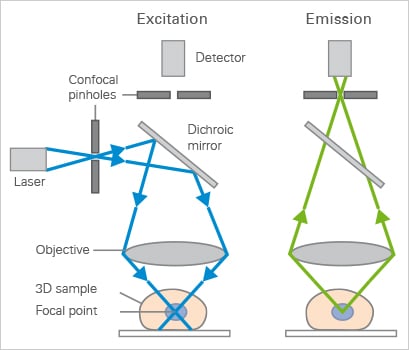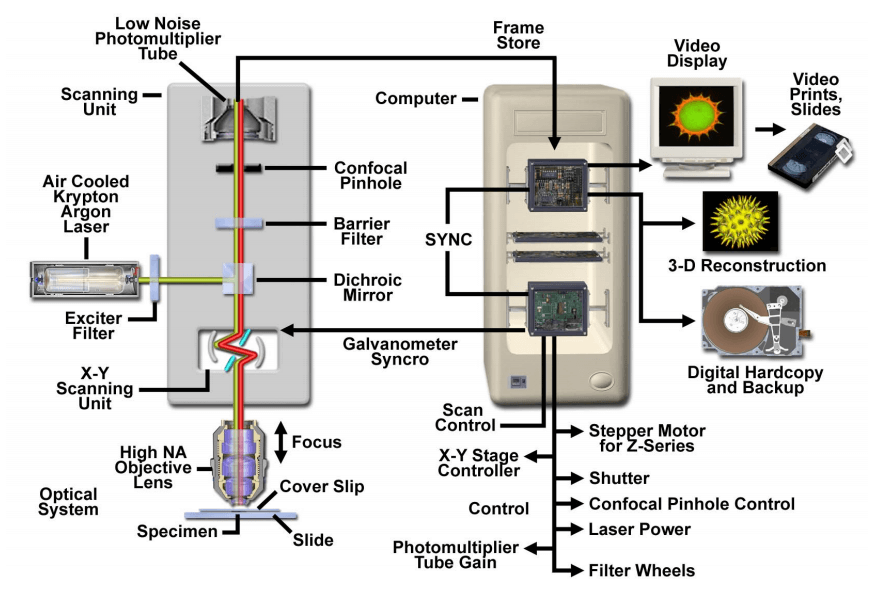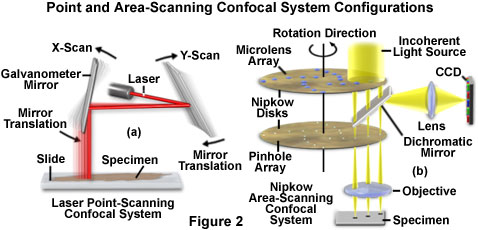The primary advantage of laser scanning confocal microscopy is the ability to serially produce thin 0 5 to 1 5 micrometer optical sections through fluorescent specimens that have a thickness ranging up to 50 micrometers or more.
Advantages and disadvantages of laser scanning confocal microscopes.
Laser scanning confocal microscopy is a significant advance in the field of optical microscopy primarily because it permits sample visualization deep within living and fixed cells tissues and other samples.
Laser scanning confocal microscope.
Laser scanning confocal microscopy.
Advantages of confocal laser scanning microscopy industrial applications of confocal microscopy thin film profiling.
Coherent light emitted by the laser system excitation source passes through a pinhole aperture that is situated in a conjugate plane confocal with a scanning point on the specimen and a.
When investigating multilayer structures the true surface of a substrate can be observed through a surface coating.
Advantages and disadvantages of confocal microscopy.
Confocal microscopy offers several advantages over conventional optical microscopy including controllable depth of field the elimination of image degrading out of focus information and the ability to collect serial optical sections from thick specimens.
It provides the ability to collect sharply defined optical sections from which three dimensional renderings can be created.
The confocal principle in epi fluorescence laser scanning microscopy is diagrammatically presented in figure 2.
The thickness of the coating can be determined by observing the 2 peaks in the axial intensity variation.
Can produce 3d.
A thick 16 micrometer section of fluorescently stained.
Here are 3 quick ones.
The former is ideal for immunofluorescence microscopy and the latter is.
Where electrons are used to form images.
Speed a typical confocal uses raster scanning which means it scans the specimen point by point.
Confocal is a powerful tool but it does have some limitations.
The key to the confocal approach is the use of.
Illustrated in figure 1 are a series of images that compare selected viewfields in traditional widefield and laser scanning confocal fluorescence microscopy.
The many advantages confocal microscopy provides over conventional widefield microscopy for life sciences applications helps researchers observe the internal.
Electrons are reflected off the specimen to produce a 3d image.
The two main types of confocal microscopes are the laser scanning microscopes and the tandem scanning microscopes tsm.









